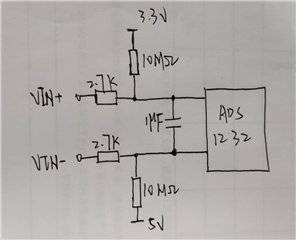The reason is that there are bugs in the company's existing modules
We need to modify the pull-up and pull-down resistance values of TC measurement disconnection detection circuit in the picture.
We plan to increase the existing 10MΩ to 50MΩ. If the input impedance is too small, the ADC input voltage will be too small when the sensor is not connected.
Only differential input impedance at 25 ℃ is seen in the manual.



